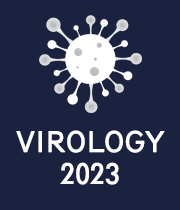Virology 2023 Important Update
This is to inform that Virology 2023 event is now merged with Infection 2023 which will be held on same dates June 21-22, 2023 in Rome, Italy and virtually.
For complete details about the merged event, please visit: https://infectiouscongress.com
For further details, please contact us at infectious@magnusconference.com or call + 1 (702) 988 2320
SARS-Cov-2 Diagnosis, Treatment and Vaccine
The virus that causes COVID-19 (coronavirus disease 2019), the respiratory disease that started the COVID-19 pandemic, is the severe acute respiratory syndrome coronavirus 2 (SARSCoV2). It was formerly known by its preliminary name, 2019 novel coronavirus (2019-nCoV), and has also been termed human coronavirus 2019. (HCoV-19 or hCoV-19). The virus has limited genetic variability, implying that the SARS CoV2 spill over event that brought the virus to humans happened in late 2019. When no members of the community are immune and no preventive measures are adopted, epidemiological studies suggest that each infection results in an average of 2.39 to 3.44 new infections.

